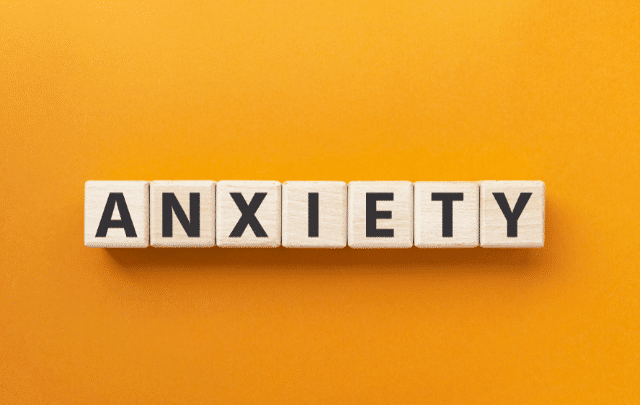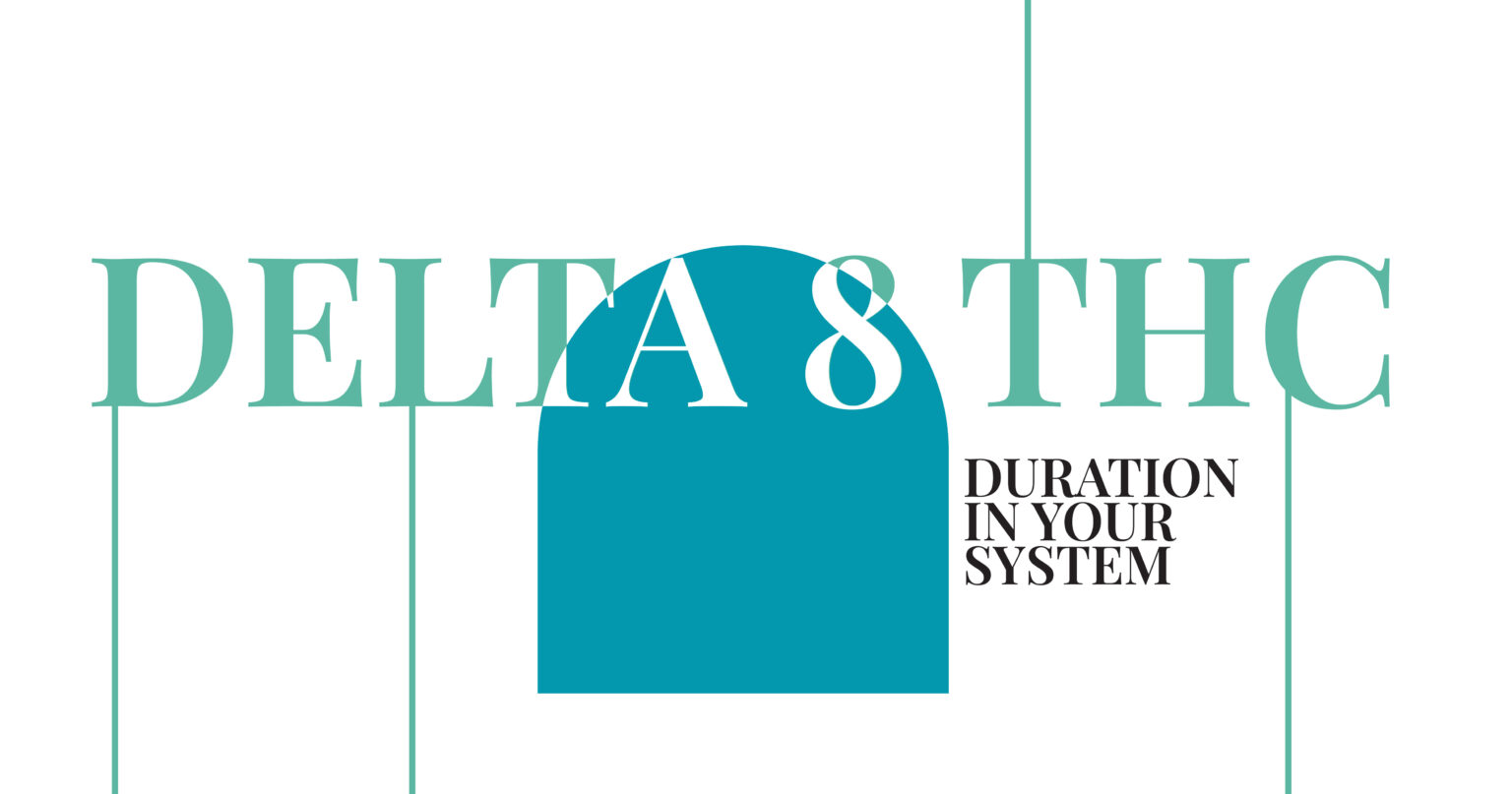031 Blue Pill and Its Use in Anxiety Treatment: A Comprehensive Guide
Anxiety affects millions worldwide, leading to an urgent need for effective treatment options. Among these, the 031 Blue Pill, known for containing alprazolam, has gained attention for its potential to alleviate anxiety symptoms. As stress and anxiety levels rise in our fast-paced society, understanding such medications becomes crucial for those seeking relief.
Alprazolam, the active ingredient in the 031 Blue Pill, belongs to the benzodiazepine class and works by enhancing the effects of a natural calming chemical in the body. Its sedative effects make it effective for the treatment of anxiety, acute panic attacks, and other anxiety-related conditions. However, it also carries a risk of dependence, life-threatening withdrawal symptoms, and dangerous side effects, especially when misused. Awareness of these risks, along with the potential for adverse reactions like slurred speech, mood swings, and cognitive effects, is essential when considering this medication.
This guide delves into its pharmacological properties, mechanisms of action, and positive evidence supporting its therapeutic benefits. It also highlights concerns like the fetal risk during pregnancy, potential transfer through breast milk, and excessive worry about long-term effects or interactions with illicit drugs, alcohol addiction, or other dangerous drug combinations. For individuals with a history of substance abuse, a medical detox program or support from Residential Treatment Centers may be necessary for safe use or discontinuation.
Whether you’re considering the 031 Blue Pill for personal use or seeking to support someone grappling with mental health conditions, this comprehensive guide will equip you with the knowledge needed to navigate treatment options. By understanding its effects of alprazolam, including rapid onset, acute symptoms, and its role in achieving a sense of calm, you’ll be better prepared to discuss options with a healthcare professional. Join us as we explore the various facets of this medication and its place in mental health treatment.
Understanding Alprazolam: The Active Ingredient
Alprazolam, widely known as Xanax, is a prescription medication used to treat anxiety and panic disorders. It belongs to a class of drugs called benzodiazepines, which help balance chemicals in the brain. The blue pill marked “031” contains 1 mg of alprazolam and is produced by Actavis.
Key Points about Alprazolam:
- Onset and Duration: Typically, alprazolam begins working within 30 minutes to an hour and its calming effects last about 4 to 6 hours.
- Common Side Effects: Users often experience drowsiness, dizziness, dry mouth, and difficulty with balance.
- Potential Risks: Xanax carries a high potential for addiction and misuse. Dependence can lead to severe withdrawal symptoms.
- Cautions: Avoid combining it with alcohol or other substances, as this increases the risk of adverse effects and overdose.
When prescribed for anxiety or panic disorders, alprazolam can be highly effective. However, due to its potential for abuse and addiction, it should only be used under medical supervision. Always consult a healthcare provider before making any changes to your medication regimen.
The Pharmacological Properties of the 031 Blue Pill
The 031 blue pill, known as Alprazolam 1 mg, is often prescribed to help with anxiety and panic disorders. It is recognizable by its calming effect on the nervous system. Alprazolam is the generic form of Xanax, and it works by enhancing gamma-aminobutyric acid (GABA), a neurotransmitter that reduces nerve activity.
Here’s a quick overview of its properties:
Property | Details |
|---|---|
Onset of Action | 30 minutes to 1 hour |
Duration of Effect | 4 to 6 hours (up to 12 hours for extended-release) |
Key Function | Enhances GABA to reduce anxiety |
Important considerations:
- Follow your doctor’s instructions carefully to avoid adverse effects like dependence and severe withdrawal symptoms.
- Be cautious of the potential for misuse and the risk of overdose.
Consulting a healthcare provider is essential for anyone who needs to use this medication for mental health disorders. It’s crucial to balance effective treatment with medical supervision to ensure safe use.
Mechanisms of Action in the Brain and Body

The blue pill 031, known for containing 1 mg of alprazolam, is a benzodiazepine. It enhances the calming effects of gamma-aminobutyric acid (GABA), a neurotransmitter in the brain. By boosting GABA, alprazolam helps decrease central nervous system activity, which is key in managing anxiety and panic disorders.
Here’s how it works:
- GABA Enhancement: Alprazolam intensifies GABA’s ability to soothe nerve signals.
- Central Nervous System Depression: By calming the brain, it reduces anxiety symptoms effectively.
- Short-Term Relief: It’s especially helpful for sudden panic attacks or generalized anxiety disorder (GAD).
Effects:
- Reduced Anxiety: Calms mental conflicts and promotes peace.
- Relaxation: Induces a tranquil state helpful in daily life management.
For more information, always consult a healthcare provider.
Dosage Guidelines for Effective Use

Xanax, or alprazolam, is a prescription medication used to treat anxiety and panic disorders. Dosage can vary based on individual needs and the severity of the condition. It’s vital to follow your healthcare provider’s instructions.
Common Dosages and Colors:
Dosage | Color |
|---|---|
0.25 mg | White |
0.5 mg | Peach |
1 mg | Blue |
2 mg | White |
The blue pill, a 1 mg dosage, is often used in treating severe anxiety or panic disorders. However, misuse can lead to dependency and severe withdrawal symptoms.
Key Tips:
- Follow Prescriptions: Always use Xanax as directed by a healthcare provider.
- Avoid Adjustments: Do not change your dosage without medical supervision.
- Short-term Use: Limit use to short-term in order to reduce the risk of dependency.
- Avoid Alcohol: Mixing with alcohol can increase adverse effects.
Used correctly, Xanax can be an effective treatment for anxiety disorders, helping maintain daily life without adverse effects. Always consult with your healthcare provider to ensure safe and effective use.
Efficacy in Anxiety Relief: What Research Says
Xanax, a well-known prescription medication, is praised for its anxiolytic effects. It offers quick relief for symptoms of generalized anxiety disorder (GAD) and other anxiety conditions. The medication typically begins working within 30 minutes to an hour.
Xanax Facts:
- Rapid Relief: Effective for sudden panic attacks
- Duration: Effects last 4-6 hours; up to 12 hours for Xanax XR
- Use: Best suited for short-term relief
Although Xanax is effective, it’s important to note the potential for dependency and tolerance with long-term use. Over time, the efficacy of Xanax can decrease, requiring careful medical supervision by a healthcare provider.
Benefits:
- Reduces anxiety
- Manages panic episodes
Risks:
- Dependence
- Tolerance
By weighing the benefits and risks, patients and their healthcare providers can decide on the best treatment plan for managing anxiety disorders. Regular evaluations ensure that Xanax remains a safe and effective part of a comprehensive treatment strategy.
Potential Side Effects and Risks of the 031 Blue Pill
The 031 blue pill, often prescribed for anxiety, carries several potential side effects that users should be aware of. Common effects include drowsiness and dizziness, which can disrupt daily life and increase the risk of falls and accidents.
It’s important to follow medical supervision closely. Short-term use is typically recommended for managing anxiety to reduce the chance of developing a dependency. Misuse of this prescription medication can lead to dependency and pose significant long-term challenges for individuals.
To help mitigate risks, it’s crucial to adhere to the prescribed dosage as advised by a healthcare provider. This ensures the medicine serves its intended purpose without leading to adverse effects or the potential for misuse.
Potential Side Effects:
- Drowsiness
- Dizziness
Key Considerations:
- Limit use to short-term for anxiety.
- Follow healthcare provider’s dosage instructions.
- Avoid misuse to prevent dependency.
By closely following medical advice, individuals can effectively manage their anxiety disorders while minimizing risks associated with the 031 blue pill.
The Risk of Addiction: Understanding Dependence

Blue Xanax is a prescription medication used to treat anxiety and panic disorders. While it can be effective in managing symptoms, long-term use carries significant risks.
Physical Dependence and Withdrawal
Prolonged use of Blue Xanax can lead to physical dependence. This means the body gets used to the drug, increasing the risk of addiction. If stopped abruptly, severe withdrawal symptoms can occur. This underscores the importance of medical supervision when discontinuing use.
Factors Contributing to Addiction
Several factors contribute to the risk of addiction:
- Rebound Anxiety: Stopping Xanax can cause a rebound in anxiety symptoms, urging users back to the medication, reinforcing dependence.
- Misuse: Using Xanax in non-prescribed ways for quicker effects greatly increases addiction risk.
- Illicit Access: Obtaining Xanax from illegal sources, like drug dealers, usually stems from existing addiction, making safe, legal access difficult.
Managing Addiction
Addiction treatment programs can help manage dependence. These programs include medical supervision to safely reduce use and support for overcoming addiction. Always seek advice from a healthcare provider before changing your medication routine.
Drug Interactions: What to Watch For
Mixing medications can be risky, especially with drugs like Xanax. When combined with alcohol, Xanax can lead to dangerous outcomes such as slowed breathing and heart rate. Additionally, pairing Xanax with other drowsy-inducing medications, like painkillers or sleep aids, can increase sedation and impair response times.
Certain drugs can interact negatively with Xanax. These include:
- Opiates
- Muscle relaxers
- Some antibiotics
These interactions can heighten side effects or reduce the effectiveness of Xanax. Another common substance, caffeine, can counteract Xanax’s calming effects, making it less effective for anxiety treatment.
It’s crucial to share all medications, supplements, and herbal products you are taking with your healthcare provider. Many substances can affect alprazolam blood levels, increasing interaction risks. Here is a quick reference:
Substance Type | Effect |
|---|---|
Alcohol | Increased drowsiness |
Opiates | Heightened side effects |
Caffeine | Reduced calming effects |
Informed choices can reduce risks and enhance the effectiveness of your treatment. Always consult with a licensed pharmacy or healthcare provider for advice.
Alternative Anxiety Treatments: A Comparison
Alternative treatments for anxiety disorders extend beyond Blue Xanax. Various medications and therapeutic approaches exist. Consulting with a healthcare provider can help tailor these options to individual needs.
Medications vs. Therapeutic Approaches:
Treatment Type | Description |
|---|---|
Medications | Includes SSRIs, SNRIs, and other anti-anxiety prescriptions |
Therapeutic Approaches | Cognitive Behavioral Therapy (CBT), mindfulness, and yoga |
Steps for Safe Medication Use:
- Consult a healthcare provider for a customized plan.
- Gradually taper off medications like Blue Xanax to minimize withdrawal symptoms.
- Consider combining medication with therapy for a holistic approach.
Support from loved ones and professionals is crucial, especially if there is potential for misuse or addiction. Those affected should seek an addiction treatment program. Additionally, professional help and gradual tapering plans aid in safely discontinuing medications under medical supervision.
The Role of Professional Guidance:
- Ensures safe use and withdrawal of prescription drugs.
- Provides a structured path to recovery and management of anxiety.
Proper medical supervision can ease both short-term and long-term use of anxiety medications.
Treatment Options for Xanax Addiction
Inpatient rehabilitation is a key approach for treating Xanax addiction. Individuals live in a treatment facility, receiving intensive support in a structured setting. This environment helps them focus on recovery without outside distractions.
Regular check-ins with healthcare providers are crucial. Providers monitor the individual’s response to Xanax and adjust dosages as needed. Tapering off Xanax under medical supervision is critical to avoid severe withdrawal symptoms.
Many facing Xanax addiction may resort to buying the drug illegally. This happens when standard prescriptions do not meet their cravings. It’s essential to seek professional help rather than risk the consequences of illegal purchasing.
Here’s a quick overview of treatment options:
- Inpatient Rehabilitation: Live-in care with structured support.
- Medical Supervision: Regular consultations to monitor health.
- Tapering Plans: Gradual reduction of Xanax for safety.
- Rehabilitation Centers: Thousands across the country offer diverse programs for recovery.
Choosing the right path is essential for recovery. Consult with experts about your options to ensure safe and effective treatment.
Navigating Insurance Coverage for Therapy Services
Navigating insurance coverage for therapy services can be daunting, but understanding your options is key. Many insurance plans offer coverage for addiction treatment, yet the extent can vary widely. Here’s how to navigate it:
- Verify Coverage: Contact your insurance provider directly to learn about specific details and benefits available under your plan. This will clarify what therapy services are covered.
- Treatment Centers: Accredited treatment centers can help verify your benefits and determine necessary authorizations. Keep in mind, these are estimates and not guaranteed payments.
- Additional Resources: Explore additional options through reputable resources like the Substance Abuse and Mental Health Services Administration (SAMHSA) or consult professional centers for comprehensive care.
When choosing a treatment center, ensure they understand insurance procedures and potential costs involved. This can prevent unexpected expenses.
Aspect | What to Do |
|---|---|
Verify Information | Contact insurer for plan details |
Seek Help | Use treatment centers for estimates |
Explore Resources | Consult SAMHSA and professionals |
Understanding insurance can make therapy more accessible and affordable, allowing you to focus on recovery and mental health.
Personal Experiences with the 031 Blue Pill
Many individuals share their journeys with Blue Pill 031 for managing anxiety. This pill is commonly used to address various anxiety disorders, including generalized anxiety disorder and severe anxiety.
Experiences with Blue Pill 031:
- Essential Support: For some, Blue Pill 031 acts as a crucial support system, offering stability during anxiety struggles.
- Gentle Helper: Others see it as a gentle tool, helping restore normalcy in daily life and easing panic attacks.
- Varied Impact: Users report it effectively addresses both mild and severe anxiety levels.
User Insights on 031 Blue Pill:
Experience | Impact |
|---|---|
Stability | Provides essential support |
Normalcy | Restores daily life functions |
Anxiety Relief | Tackles both mild and severe anxiety |
However, the experiences vary widely. It’s important to consult a healthcare provider for medical supervision. Misuse or long-term use could lead to severe withdrawal symptoms or addiction. Always obtain it through a licensed pharmacy to avoid potential for abuse.
Expert Opinions on Clinical Use and Effectiveness
Xanax, especially the blue pill, is popular for managing anxiety disorders due to its fast-acting nature. It usually begins to work within 30 minutes to an hour, providing relief for about 4 to 6 hours. For longer effects, extended-release formulations like Xanax XR can last up to 12 hours.
Common Side Effects:
- Drowsiness
- Dizziness
- Dry mouth
Although effective, Xanax can cause adverse effects and carries a risk of dependency. Abruptly stopping its use may lead to severe withdrawal symptoms. It’s crucial to consult a healthcare provider for a proper tapering plan to minimize risks.
Alternatives and Considerations:
Healthcare providers may suggest alternatives to tailor treatment plans to individual needs, ensuring effective care. This reduces the risk of overdose and potential for misuse.
Usage Guidelines:
- Short-term Relief: Effective for immediate anxiety symptoms.
- Long-term Use: Requires careful medical supervision to avoid addiction.
It’s important to consider the potential for abuse and the importance of following a healthcare provider’s advice when using prescription drugs like Xanax. Always purchase from a licensed pharmacy to ensure safe human consumption.
Long-Term Considerations in Anxiety Management
Managing anxiety over the long term requires careful planning, especially when using alprazolam. This medication, often identified by its blue color and oval shape, is effective for treating anxiety and panic disorders. However, it has a risk of habit formation, which makes medical supervision crucial.
Key Considerations for Alprazolam Use:
- Regular Check-ups: Consistent consultations with a healthcare provider are essential. They ensure the medication is working effectively and adjust dosages if necessary.
- Potential Side Effects: Users may experience drowsiness or impaired coordination. It’s important to be cautious when engaging in activities requiring alertness, particularly with long-term use.
- Withdrawal Risks: Gradual discontinuation under medical supervision is key. Sudden stopping can lead to severe withdrawal symptoms.
- Addiction Support: Structured programs, such as inpatient rehabilitation and outpatient treatment, can aid in managing potential addiction.
Potential Side Effects:
Side Effect | Description |
|---|---|
Drowsiness | Feeling unusually sleepy or lethargic |
Impaired Coordination | Difficulty with balance or movement |
For effective anxiety management, understanding these aspects of alprazolam is essential to ensure both short- and long-term health.
The Importance of Monitoring Patients on Xanax
Xanax is a potent blue pill used for anxiety and panic disorders. It belongs to a class of medications called benzodiazepines, known for their fast-acting effects. However, it also has a high potential for addiction and severe withdrawal symptoms. Monitoring is crucial to ensure safe and effective treatment.
Key Considerations:
- Potential for Misuse: Due to its impact on mood and mind, dependency can develop quickly. Regular monitoring helps adjust dosages to prevent misuse.
- Withdrawal Risks: Abrupt stopping of Xanax can lead to dangerous withdrawal symptoms like seizures. A healthcare provider should always oversee discontinuation.
- Timing and Dosage: Effects begin within an hour, with peak levels at two hours. Proper timing of doses is essential for managing anxiety effectively.
Monitoring Strategies:
Monitoring Aspect | Purpose |
|---|---|
Regular Check-ups | Adjust dosage as needed |
Reassessment | Evaluate treatment efficacy |
Gradual Discontinuation | Reduce withdrawal risk |
With careful supervision, Xanax can be a part of an effective treatment plan for anxiety disorders. However, it requires close attention to dosing and frequency to minimize adverse effects and potential for addiction.
Conclusion: Finding the Right Approach to Anxiety Treatment
Finding the right approach to anxiety treatment requires careful consideration and medical supervision. Blue Xanax is a common medication for severe anxiety and panic disorders, but it carries the risk of dependency and withdrawal symptoms. Abruptly stopping Blue Xanax can be dangerous. It is vital to follow a gradual tapering plan under a healthcare provider’s guidance.
There are alternatives to Blue Xanax. Other prescription medications and therapies can effectively treat anxiety disorders. Personalized care is crucial to address each individual’s unique needs.
When using Blue Xanax, adhere strictly to the prescribed dosage and schedule. Never change your regimen without consulting your healthcare provider.
For those facing addiction, professional support is vital. Seek help from addiction treatment specialists. You can ease the withdrawal process with a slow tapering plan and the possibility of additional treatments for comfort.
Always discuss all options with your doctor. Personalized and supervised anxiety treatment can improve daily life while minimizing risks.
Key Considerations |
|---|
Gradual tapering off |
Alternative medications |
Professional support |
Personalized care |
Remember, effective anxiety treatment should support mental health without compromising safety.




